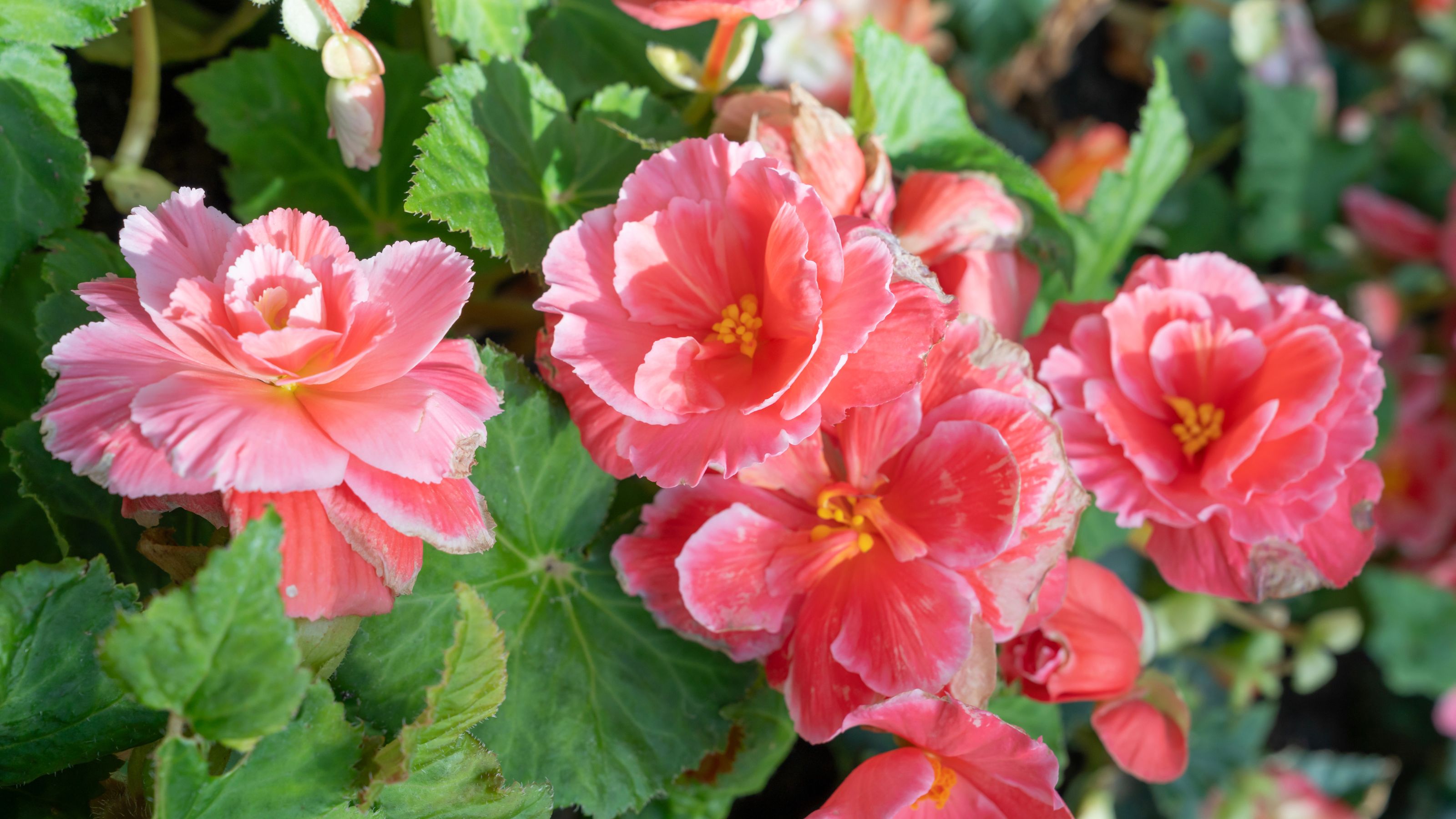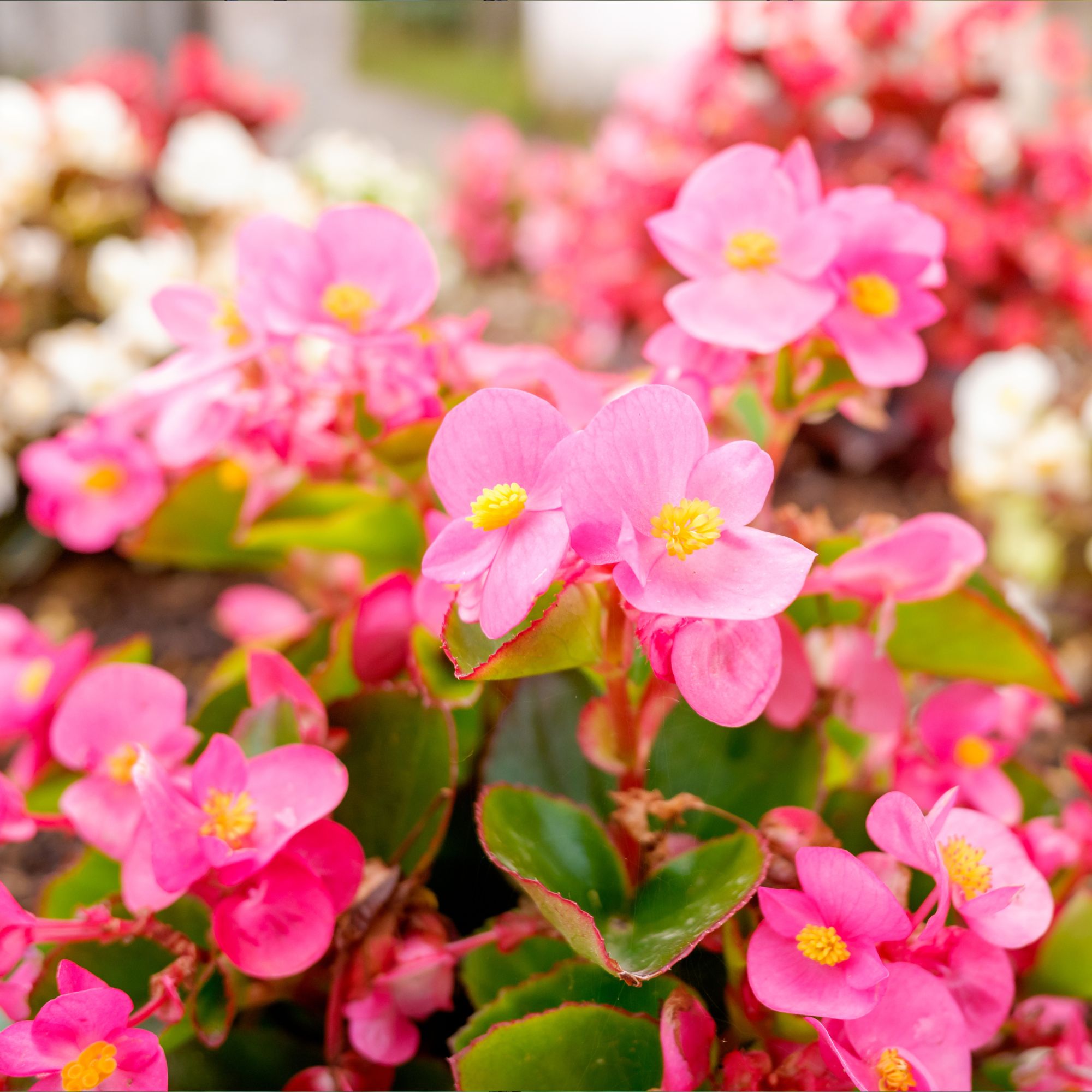Overwintering begonias – simple steps to ensure your plants bloom again next year
An easy guide to overwintering begonias


Sophie King
When it comes to learning how to overwinter tender perennials, begonias are among the easiest – in fact, overwintering begonias is really straightforward.
So, if you finally learned how to grow begonias from tubers this year, you'll be pleased to know that you can enjoy next year's blooms on the very same plant. With a little overwintering know-how, of course.
Eager to learn how to overwinter begonias? Take a look at our quick guide...
Overwintering begonias
If you've already mastered the art of overwintering geraniums (and know exactly how to overwinter dahlias, too), then you might be wondering how to overwinter begonias.
We have good news on that front: you'll be pleasantly surprised by how easy it is!

But first, you'll need to make sure you have the right kind of begonia.
'Large flowered or ‘tuberous’ begonias are quite easy to overwinter,' explains Morris Hankinson, director of Hopes Grove Nurseries. 'Just like dahlias, they form a tuber under the soil.'
Get the Ideal Home Newsletter
Sign up to our newsletter for style and decor inspiration, house makeovers, project advice and more.
One of the major benefits of overwintering begonias (other than the fact that you won't have to buy them again next year, of course!) is that you will start next spring with a larger tuber.
According to Morris, this means that your begonias will have even more flowering potential than the year before. Consider us sold!
What you'll need
- A good pair of secateurs, like the Gardena Garden Secateurs from Amazon
- A garden fork, like the Draper Carbon Steel Border Fork from Amazon
- An unheated shed or garage
- Plant labels
- A cardboard box lined with newspaper or a brown paper bag
- Dry sand, soil or compost
How to overwinter begonias in pots
If you're keen to start overwintering begonias in pots, then you're in luck: half the job has already been done for you!

'Overwintering begonias in pots could not be easier,' says gardening expert Sarah Raven. 'Simply move your potted plants to a dark, dry, and frost-free spot inside.'
You'll need to time it right, though. 'Make sure to do this well before the first frosts hit, keeping them indoors until the colder seasons have completely passed,' says Sarah. 'Allow the begonias’ surrounding compost to dry out during the winter, waiting for signs of new growth to emerge in spring before watering again.'
It's really that simple! If you have a fibrous begonia, you can even bring it inside to live as a houseplant during the winter.

Sarah’s love of gardening extends to all areas, from growing cut flowers and delicious vegetables from seed, to designing stunning gardens packed full of variety, colour, and scent. Always with a focus on helping the environment and biodiversity, Sarah’s gardens are havens for birds, bees, and other pollinators.
Her popular gardening podcast ‘grow, cook, eat, arrange’ has achieved 4.3 million downloads. She’s published 14 books and runs sarahraven.com, which services over 600,000 customers.
Photography © Jonathan Buckley
How to overwinter begonia tubers
If your begonias have been planted directly into your garden, don't worry; you can still overwinter the tubers themselves. Wait for the leaves to yellow, before cutting back stems to three or four inches above the tuber.
'Before frosts begin, dig up the entire begonia while the foliage is still attached, taking care to avoid damaging the tuber,' says Graham Smith MCIHort, gardening expert at LBS Horticulture.
Try not to damage or bruise the tubers, brush away any loose soil, and hang them upside down to dry for a few days.
Then, you can store them. 'Pack the tubers away in shallow trays or storage boxes, surrounding them with dry compost, vermiculite, or sand,' says Sarah.
Just be sure to water them occasionally to keep them from shrivelling up.
'Ideally, store the tubers in a cardboard box where they can be evenly spaced apart in almost-dry soil,' adds Graham. 'This box should be kept somewhere dry, frost-free and dark until the tubers can be replanted in spring.'
FAQs
How do I know if my begonias are tuberous?
If you've only just learned that some begonias are tuberous, you're probably wondering how to tell if your plants match the criteria. Luckily, there are a few tell-tale signs that begonias are tuberous.
'Tuberous begonias can be identified by their oval, green leaves that tend to grow around eight inches long,' explains Sarah Raven. 'When looking at the plant’s roots, you’ll also notice that tuberous begonias have a round, flattened brown tuber, rather than the creeping surface roots of fibrous-rooted begonias.'
Can I leave begonias in pots over winter?
Absolutely! In fact, it's one of the easiest ways to overwinter begonias. As mentioned above, simply move the pot to a cool, frost-free spot inside.
'If your begonias were planted in containers, these can be left in the container provided that you replace most of the compost during early spring to prevent poor growth or a lack of flowers,' adds Graham.
Overwintering begonias couldn't be simpler, and it's the perfect way to extend the life of your hard-earned plants.

Kayleigh Dray became Ideal Home’s Acting Content Editor in the spring of 2023, and is very excited to get to work. She joins the team after a decade-long career working as a journalist and editor across a number of leading lifestyle brands, both in-house and as a freelancer.
- Sophie KingGardens Editor
-
 My go-to Ninja coffee machine is on sale for Easter weekend
My go-to Ninja coffee machine is on sale for Easter weekendIt makes coffee shop quality achievable at home
By Molly Cleary
-
 When to plant out annual flowering plants for vibrant, colourful garden borders – and give them the best start, according to experts
When to plant out annual flowering plants for vibrant, colourful garden borders – and give them the best start, according to expertsNot sure when to plant out annual flowering plants? We've got you covered...
By Kayleigh Dray
-
 I'm a kitchen decor editor and didn't like this tableware trend - until I saw H&M Home's designer-look plates
I'm a kitchen decor editor and didn't like this tableware trend - until I saw H&M Home's designer-look platesThey made it easy to justify a new crockery set
By Holly Cockburn